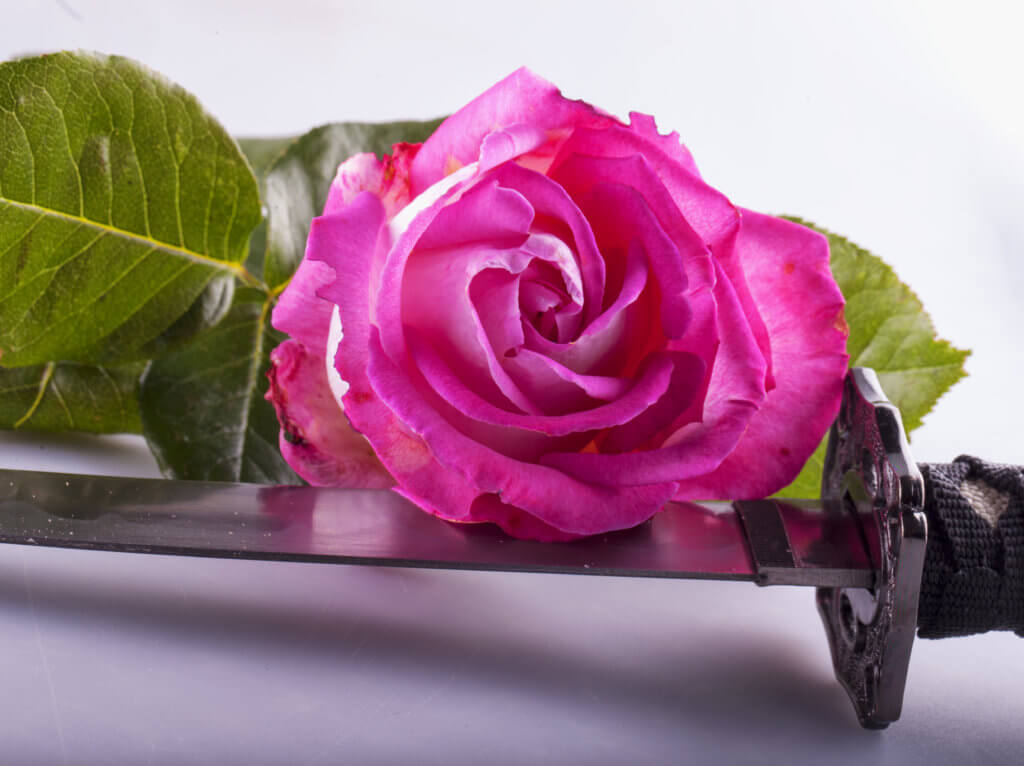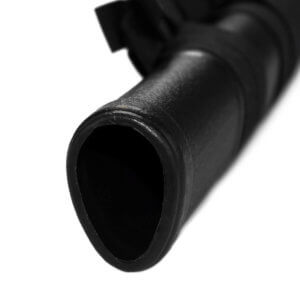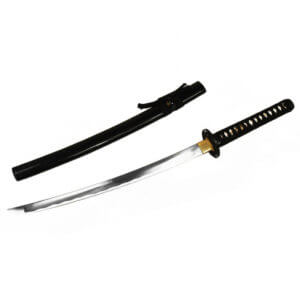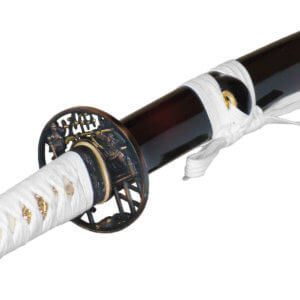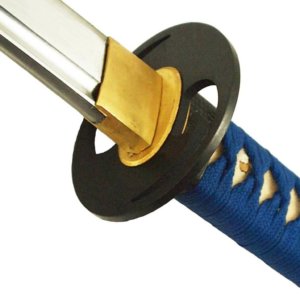It has happened: although it has been treated with care, a slight hint of rust is visible on the precious sword blade. However, this is no cause for concern, as this so-called rust film can usually be removed without a trace. Nevertheless, it is advisable to have the actual extent of the rust damage assessed by an expert. In any case, quick action is required, as rust build-up favours the formation of further rust.
In this article, we want to explain how flash rust occurs, how to remove it correctly and what can be done to prevent it from occurring in the first place.
Flash rust on the sword: How it occurs
Rusting is a chemical process. Oxygen from the air removes electrons from the metal, which can be seen visually as rust in particularly affected areas. Certain liquids intensify this process. But how do they get onto the blade? Here are a few possible causes:
-
- Air humidity
- Sweat (e.g. from touching)
- Liquids (e.g. from Tameshigiri with mats, fruit or full bottles)
Correctly remove the rust film from the blade
As flash rust is a superficial build-up of rust, it can usually be removed by one (or more) centreboard maintenance procedure(s). This requires uchiko (sword powder) made from limestone. The different types of uchiko are here explained.
Matching sword care products from our shop:
The process in detail
With a bit of luck, fresh rust can still be removed with our sword oil. The oil infiltrates the rust and dissolves it. This is the simplest solution. If that alone no longer helps, Uchiko must be used:
Normal centreboard maintenance should be carried out for this
The maintenance procedure with limestone uchiko removes some of the accumulated rust and the subsequent oiling ensures that additional rust is removed from the blade.
A little patience is required, as it may not be possible to remove all the rust in one go. It is important not to try to work intensively on individual areas of the blade with the Uchiko, as this can quickly damage the polish of the blade.
The oil also needs time to act on the rust. The procedure should therefore not be carried out 10 times in quick succession until the rust has disappeared.
Rather, sustainability and regular maintenance are required to remove this rust.
If the rust can no longer be removed in this way, the blade is already too badly damaged. Only restoration by an expert will help.
This is relatively expensive and therefore rust build-up should be avoided.
Flash rust prevention: What can I do to prevent flash rust from forming in the first place?
Regular oiling of the blade is the best protection against rust of any kind. Of course, care should also be taken from the outset to expose the blade to as little moisture as possible. The blade should not be touched with the bare hand, as hand perspiration directly attacks the blade. You can also find more information on how best to care for your sword in our Contribution to sword care. Information on what should be avoided when handling a sword can be found in our Contribution to sword protection.
Normal centreboard maintenance can also remove rust film:

